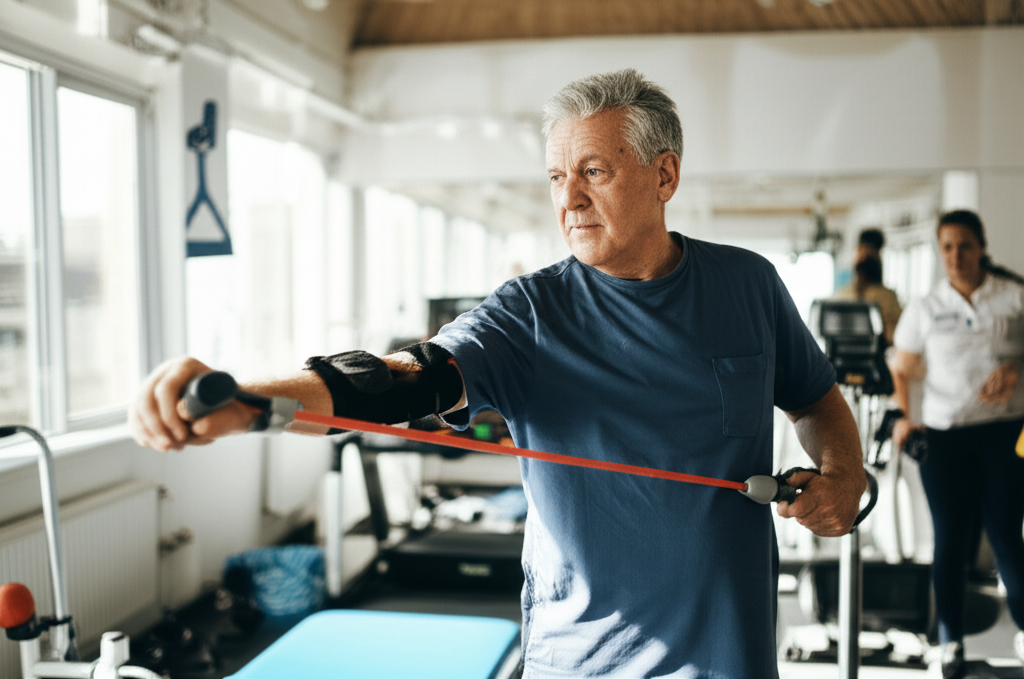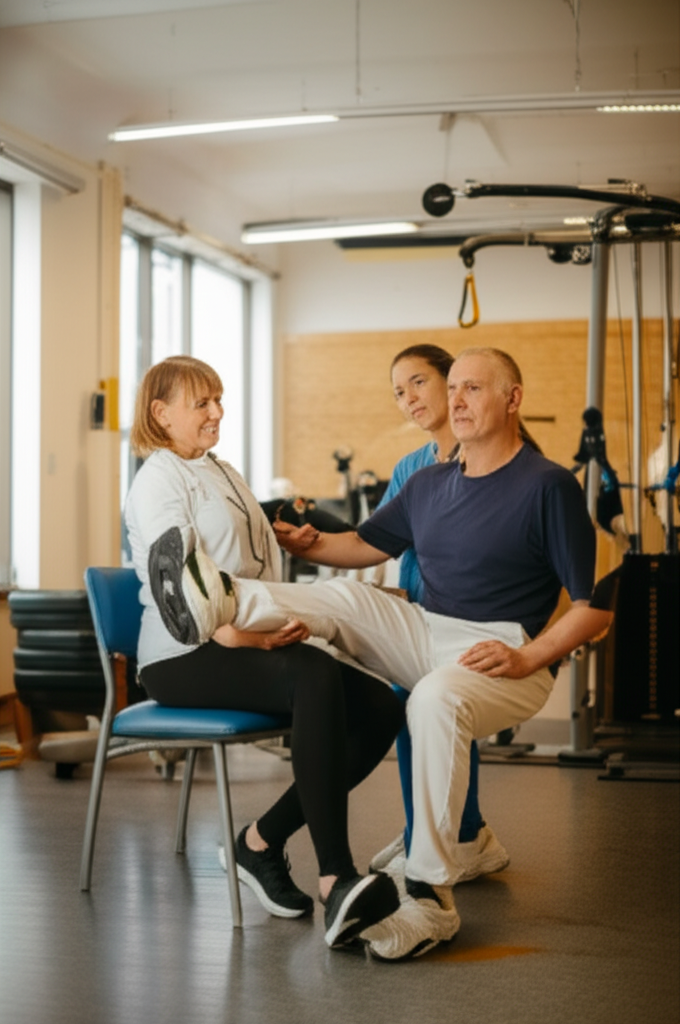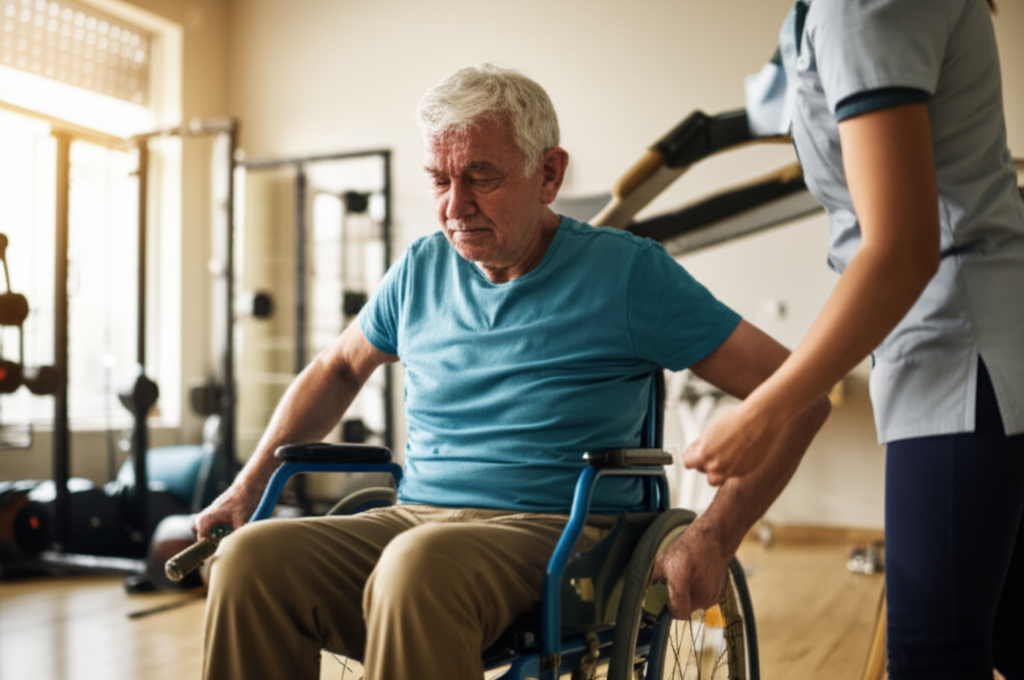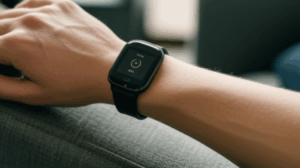A stroke can dramatically alter a person’s life, often leaving behind not only physical impairments but also profound emotional and mental health challenges. Beyond the visible physical recovery, many stroke survivors grapple with conditions like depression, anxiety, and a diminished sense of self-worth. Emerging research, however, increasingly highlights a powerful, non-pharmacological intervention that can significantly mitigate these psychological hurdles: exercise. Engaging in regular physical activity can serve as a vital component of holistic post-stroke rehabilitation, fostering mental resilience and improving overall quality of life.

The Mental Health Landscape Post-Stroke
The brain damage caused by a stroke can directly affect areas controlling emotions and personality, leading to a range of psychological effects. These can include depression, anxiety, post-traumatic stress disorder (PTSD), irritability, and apathy. Approximately one-third of stroke survivors experience emotional distress and mood disturbances, with post-stroke depression (PSD) being particularly prevalent, affecting between 29% and 36% of survivors. This depression can be overwhelming, hindering rehabilitation progress, decreasing participation in activities, and negatively impacting quality of life and interpersonal relationships.
Common Psychological Challenges Faced by Stroke Survivors:
- Depression: Characterized by persistent sadness, loneliness, hopelessness, and loss of interest in hobbies. It can be caused by biochemical changes in the brain or the losses experienced due to stroke.
- Anxiety: A common response to the fears and concerns associated with health, survival, and life changes after a stroke, affecting an estimated 20-25% of patients.
- Cognitive Impairments: Difficulty with concentration, memory, and decision-making can contribute to feelings of frustration and helplessness, further impacting mental well-being.

Exercise as a Potent Mental Health Intervention
While physical therapy primarily focuses on regaining motor skills, a growing body of evidence supports the role of exercise in bolstering mental health alongside physical recovery. Research indicates that stroke survivors who adhere to physical activity guidelines experience fewer days of poor mental health.
Key Mental Health Benefits of Exercise:
- Reduced Depressive Symptoms: Multiple studies and meta-analyses have found that exercise significantly alleviates depressive symptoms in stroke patients. Higher intensity exercise protocols, in particular, showed a positive effect on depressive symptoms in both subacute (≤ 6 months post-stroke) and chronic (> 6 months) recovery stages.
- Alleviation of Anxiety: Exercise can help reduce anxiety levels, offering a natural way to manage the stress and fear often experienced after a stroke.
- Improved Mood and Outlook: Physical activity can boost mood, increase energy levels, and foster a more positive outlook during recovery, combating feelings of helplessness.
- Enhanced Self-Efficacy and Independence: Regaining physical abilities through exercise can increase a stroke survivor’s sense of self-worth and self-reliance, which may decrease after a stroke. This renewed independence contributes significantly to mental well-being.
- Cognitive Benefits: Regular exercise has been shown to improve brain function, cognitive skills like focus, concentration, problem-solving, and memory, and can stimulate the growth of new neurons.

Recommended Exercise Strategies for Stroke Survivors
The optimal exercise regimen for stroke survivors can vary, and it is crucial to work with healthcare professionals to develop a personalized plan. However, general guidelines and effective approaches have been identified.
Types of Exercise to Consider:
- Aerobic Exercise: Activities that elevate heart rate, such as walking (outside or on a treadmill), stationary cycling, or water aerobics. The American Heart Association (AHA) recommends 20-60 minutes of moderate aerobic exercise per day, 3-7 days per week.
- Strength Training: Involves using light weights or resistance to rebuild muscle strength, stamina, and stability, addressing muscle atrophy common after a stroke. Aim for 2-3 days per week with 8-10 exercises targeting major muscle groups.
- Multicomponent Training: Studies suggest that a combination of different exercise types (e.g., aerobic, resistance, and neuromotor activities) is particularly effective in alleviating depressive symptoms.
- Balance and Gait Training: Essential for improving safety, independence, and preventing falls.
- Flexibility and Range-of-Motion Exercises: Stretching, yoga, and Pilates can improve flexibility and prevent muscle stiffness.
Optimal Exercise Protocols for Mental Health:
A systematic review and meta-analysis indicated that exercise significantly alleviated depressive symptoms in stroke patients, with multicomponent training being the most effective. Specifically, exercise programs with these characteristics showed pronounced effects:
- Duration of at least 12 weeks.
- At least 3 sessions per week.
- Sessions lasting less than 60 minutes.
- Cumulative weekly time ideally below 180 minutes.
Some research also suggests that high-intensity interval training (HIIT) can improve both physical and mental function, alleviating symptoms of depression and anxiety in stroke survivors.

Safety and Practical Considerations
Before starting any new exercise program, stroke survivors should consult with their healthcare team, including their doctor and a physical therapist. This ensures the chosen program is safe, effective, and tailored to individual needs and abilities.
Tips for Successful Post-Stroke Exercise:
- Personalized Plan: Work with a stroke physiotherapist to create an individualized exercise plan that considers specific goals, medical conditions, and physical limitations.
- Start Slowly: Begin with enjoyable and manageable activities, gradually increasing intensity and duration.
- Supervision and Support: If mobility is an issue, a supervised exercise program with a healthcare professional or exercising with a loved one or caregiver is highly recommended.
- Listen to Your Body: Stop if exercises cause pain and modify movements as needed.
- Stay Motivated: Exercising with others can keep it interesting and boost motivation. Exploring new hobbies that involve physical activity, such as gardening or learning sign language, can also provide mental stimulation and physical benefits.
By embracing physical activity, stroke survivors can not only enhance their physical recovery but also cultivate a stronger, more resilient mental state, significantly improving their overall well-being and quality of life.







